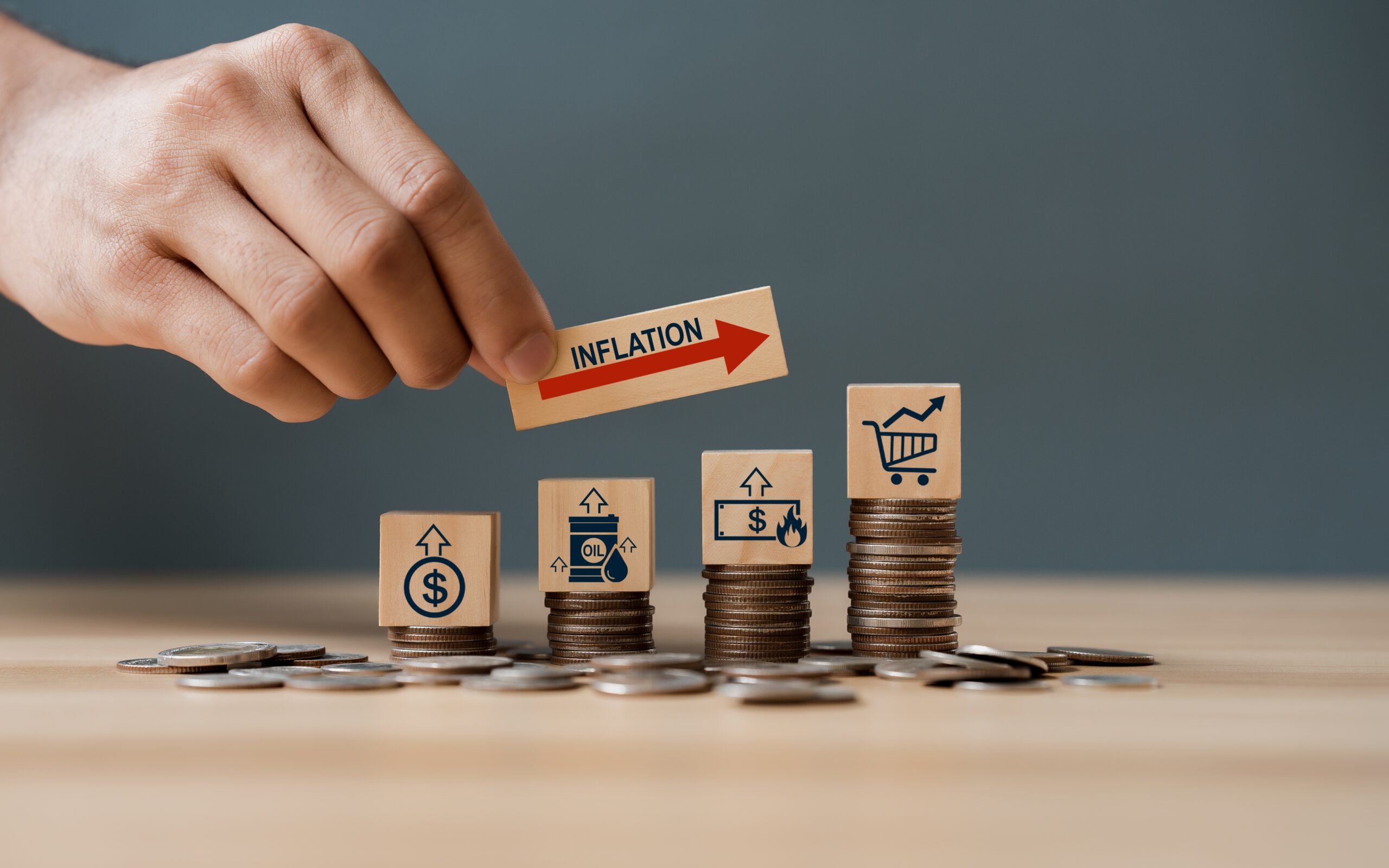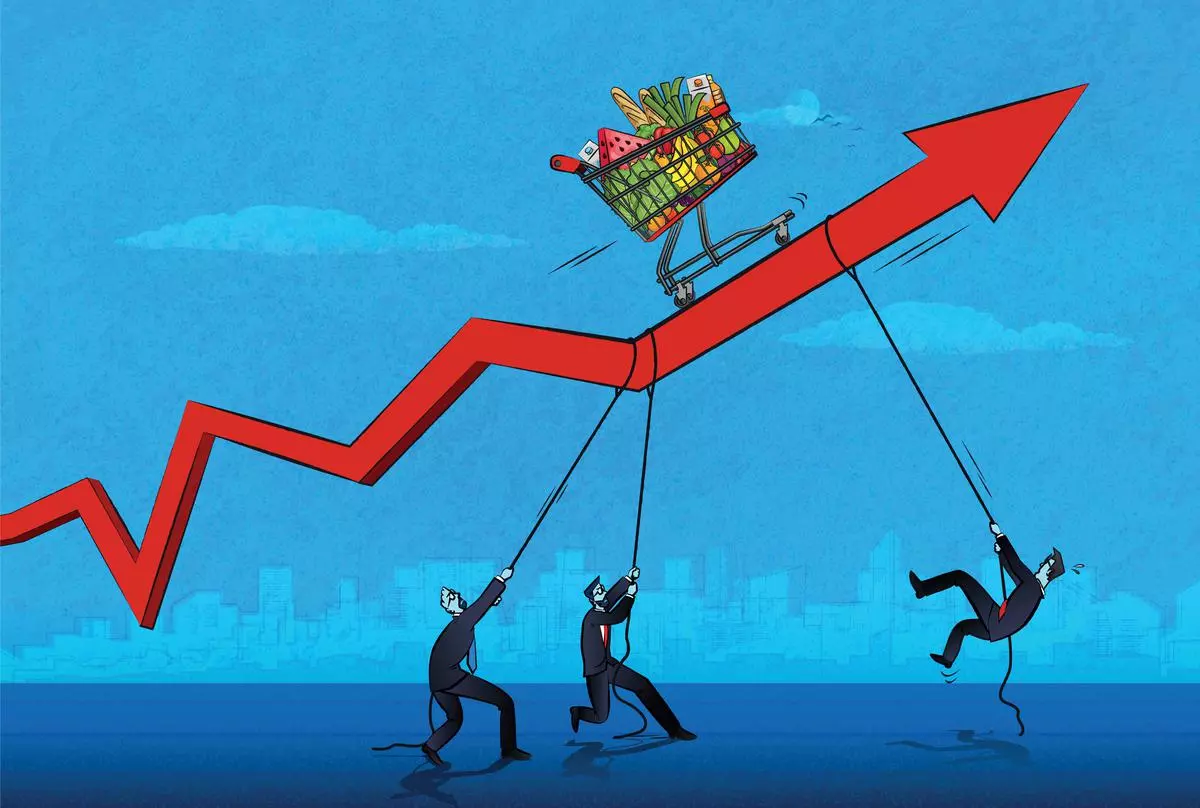FM Sitharaman Calls for Increased Vigilance Amid Inflationary Pressure 2023

FM Sitharaman Calls for Increased Vigilance Amid Inflationary Pressure 2023
Inflation, the persistent rise in the prices of goods and services, is a significant economic concern that affects individuals, businesses, and governments alike.
Finance Minister Nirmala Sitharaman has been vocal about the need for greater vigilance in addressing inflationary pressures in India. In this article, we will delve into the reasons behind her concern and explore the measures and strategies being undertaken by the government to combat inflation.

Inflationary pressure refers to the sustained increase in the general price level of goods and services over time.
It is often measured using indicators such as the Consumer Price Index (CPI) and the Wholesale Price Index (WPI). A moderate level of inflation is considered normal in a growing economy as it indicates healthy demand.
Economic growth will be driven by domestic consumption and investment demand, but inflationary pressures may continue to be high, necessitating increased vigilance on the part of the government and the Reserve Bank of India (RBI), according to Finance Minister Nirmala Sitharaman on Thursday.
The RBI and the Finance Ministry expect India’s GDP to expand by about 6.5% in FY24, down from 7.2% in FY23. The growth print for Q1FY24 was 7.8%.The International Monetary Fund increased its estimate of India’s economic growth for the current fiscal year from 6.1% to 6.3% earlier this week.

However, when inflation surges beyond a certain threshold, it can lead to a range of economic and social problems.
Several factors can contribute to inflationary pressure, and it is essential to identify these drivers to effectively address the issue. Some of the key causes of inflationary pressure include:
- Demand-Pull Inflation: This type of inflation occurs when aggregate demand for goods and services exceeds aggregate supply. Increased consumer spending, government expenditure, or investment can lead to demand-pull inflation.
- Cost-Push Inflation: When the production cost of goods and services rises, businesses often pass on these increased costs to consumers in the form of higher prices. Factors like rising commodity prices or wage hikes can trigger cost-push inflation.
- Imported Inflation: Changes in exchange rates and international commodity prices can impact the prices of imported goods, leading to imported inflation. This type of inflation is particularly relevant for countries like India, which rely heavily on imports.
- Structural Factors: In some cases, structural issues within the economy, such as supply chain disruptions, regulatory bottlenecks, or monopolistic practices, can contribute to inflationary pressure.
Finance Minister Nirmala Sitharaman’s concern regarding inflationary pressure stems from the adverse effects it can have on the Indian economy. High inflation can erode the purchasing power of consumers, reduce the real value of savings, and create uncertainty in financial markets. It can also disproportionately affect vulnerable populations who spend a significant portion of their income on essential goods and services.

Furthermore, inflationary pressure can disrupt the government’s fiscal planning and make it challenging to achieve economic stability and sustainable growth. It can lead to higher interest rates, which, in turn, can hamper investment and economic expansion.
To address inflationary pressure, Finance Minister Nirmala Sitharaman and the Indian government have implemented various measures and strategies:
- Monetary Policy: The Reserve Bank of India (RBI) plays a pivotal role in managing inflation through its monetary policy tools. RBI can use instruments like repo rates and cash reserve ratios to control the money supply in the economy and influence inflation trends.
- Fiscal Policy: The government can use fiscal policy measures, such as controlling government spending and managing subsidies, to curb inflation. By reducing excessive government expenditure, it can decrease demand-pull inflation.
- Supply-Side Reforms: Addressing structural issues in the economy, such as improving infrastructure, streamlining supply chains, and reducing bureaucratic hurdles, can help alleviate cost-push inflation.
- Exchange Rate Management: Managing exchange rates and minimizing currency depreciation can mitigate imported inflation by stabilizing the prices of imported goods.
- Inflation Targeting: The government and RBI can adopt an inflation targeting framework, where they set a specific inflation rate as the target. This provides clarity to policymakers and helps anchor inflation expectations.
- Monitoring and Data Analysis: Continuous monitoring of key economic indicators, such as CPI and WPI, is crucial to detect inflationary trends early. Data-driven decision-making allows policymakers to take timely corrective actions.
Inflationary pressure is a complex economic challenge that demands constant vigilance and a multi-faceted approach.
Finance Minister Nirmala Sitharaman’s emphasis on addressing inflation reflects the government’s commitment to maintaining price stability and fostering sustainable economic growth.

By implementing a combination of monetary, fiscal, and structural measures, India can effectively manage inflation and ensure a more prosperous future for its citizens.
However, striking the right balance between inflation control and economic growth remains a delicate task, requiring careful consideration and adaptability in an ever-evolving global economic landscape.




